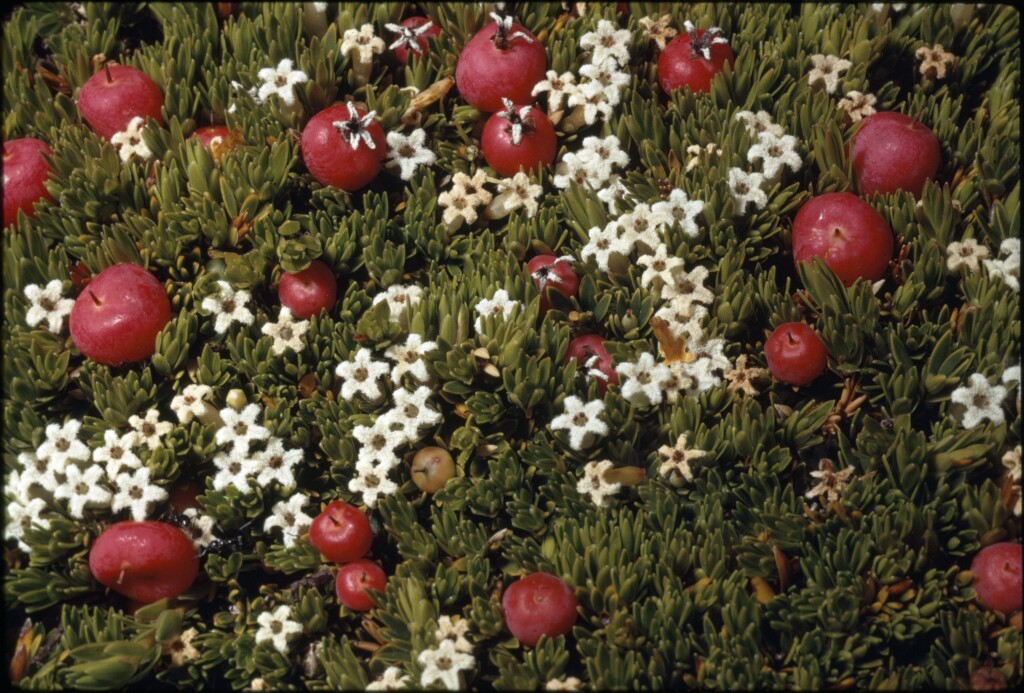Pentachondra pumila
(J.R.Forst. & G.Forst.) R.Br. Carpet HeathProstrate to decumbent mat-forming shrub to c. 10 cm high, rooting at the nodes; branchlets glabrescent. Leaves crowded, erect to suberect, oblong to elliptic, 3–6 mm long, 0.5–2.5 mm wide, obtuse, glabrous, flat or slightly concave, lower surface glabrous with 3–7 veins; margins smooth. Flowers bisexual, ± sessile, on hardened current or previous season's wood; bracts, bracteoles and sepals ovate to ovate-orbicular, obtuse; bracts 0.4–1 mm long; bracteoles c. 0.6–1 mm long; sepals c. 1.7–2 mm long; corolla white, becoming brownish externally; tube narrowly urceolate, c. 4–5.5 mm long; lobes recurved to revolute, densely bearded, c. 2–2.5 mm long, style 1–2 mm long. Fruit globose to obovoid, 5–8 mm long, red, crowned by the persistent style and sometimes by the shrivelled corolla. Flowers Nov.–Jan.
HSF, HNF, VAlp. Also NSW, Tas. New Zealand. Occurs in the higher alps, predominantly in moist, open grassland or heathland communities. Plants in flower often also have ripe or ripening fruit. Fruit set in the current season overwinter in an unripe green state, ripening the following summer.
Albrecht, D.E. (1996). Epacridaceae. In: Walsh, N.G.; Entwisle, T.J., Flora of Victoria Vol. 3, Dicotyledons Winteraceae to Myrtaceae, pp. 464–509. Inkata Press, Melbourne.
 Spinning
Spinning

